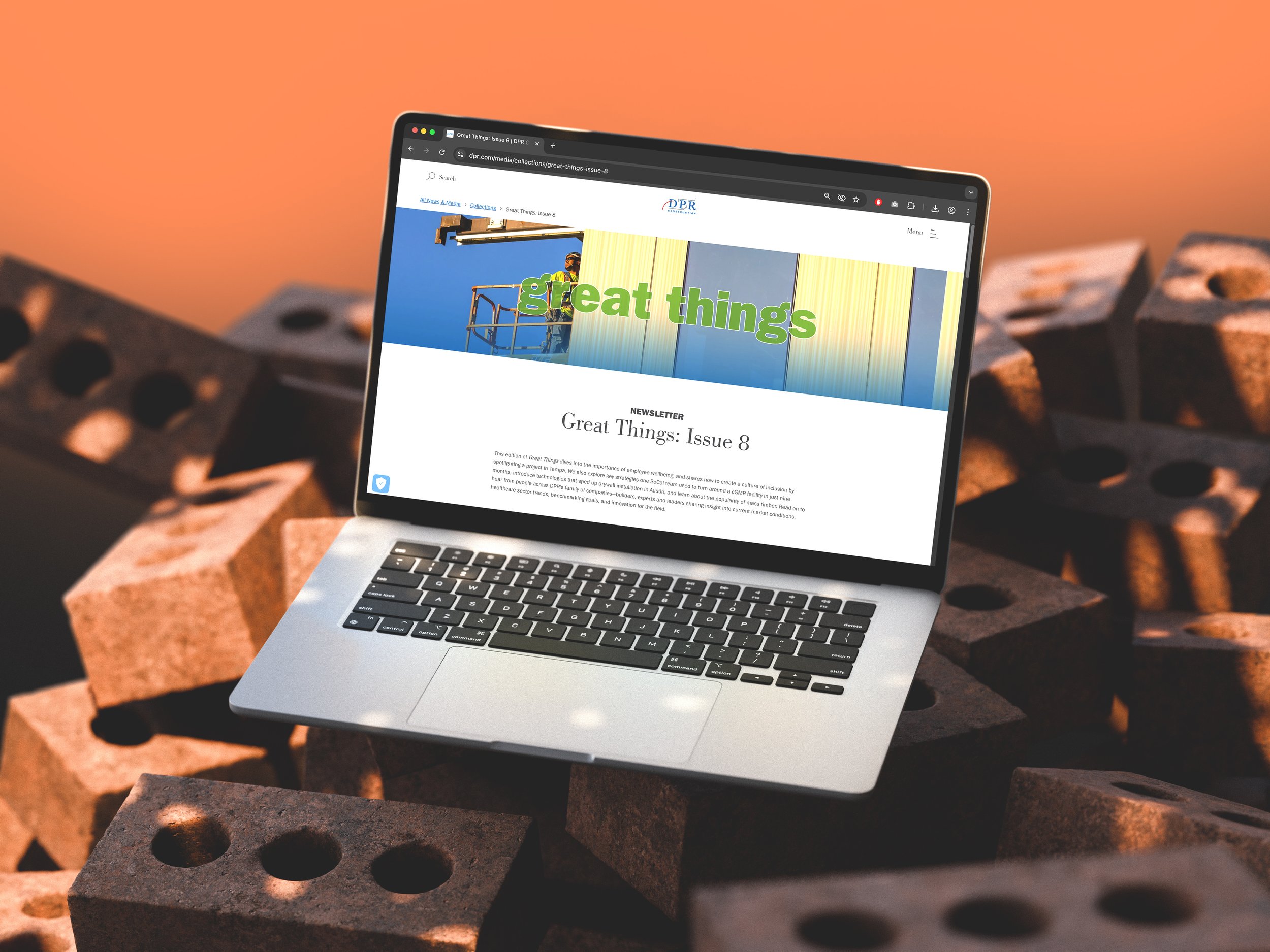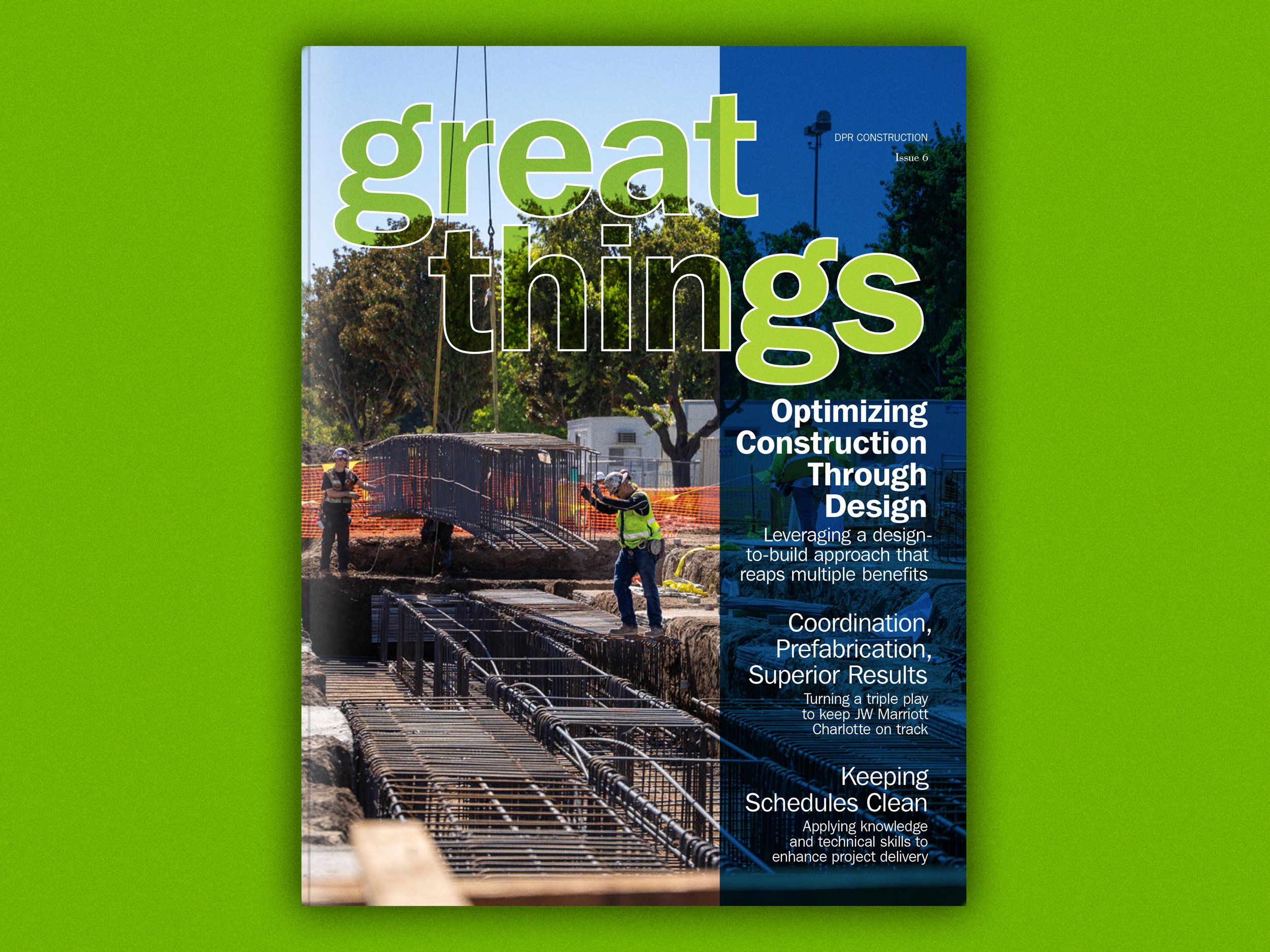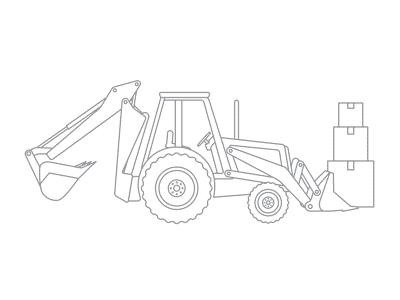GREAT THINGS
Optimizing the design process for a celebratory trade publication.
Great Things is a semiannual publication by DPR Construction, with 10,000 printed copies and 20,000+ digital impressions. It highlights major projects, cultural stories, and innovations in construction across the company, aiming to strengthen meaningful connections with employees and win new work from both new and existing customers.
The communications team was facing an 8–10 month production cycle with mounting costs and a strained agency partnership. They needed to organize and simplify production, reduce costs, and restore simultaneous print and digital releases.
Role: Creative Director
Activities: Agency relationship management, creative direction, project management, web design, content modeling, UI, UX, print design.
Circulation:
10,000 edition prints
20,000 digital content impressions
On the web:
dpr.com/media/collections/great-things-issue-8




Method of approach
I approached this project with a keen sense of the important role Great Things plays in both communication and marketing tactics. Creating an edition shouldn’t feel like a chore when the goal is to celebrate all the new projects, inventions, volunteering, and fun events across the company.
We set out to make the process, design, and publication align around a feeling of pride in DPR.




Getting organized
The primary challenges revolved around roles, responsibilities, and communication.
By surfacing complexity with a matrix diagram, I was able to gain leadership approval to implement meaningful changes. I established a project management template in Monday.com, ensuring each team member had well-defined roles and responsibilities:
Any team member could quickly view both the overall edition activities and their own individual ones. This gave content creators context around deadlines and highlighted opportunities to collaborate in meaningful ways.
Potential delays were identified as they occurred, instead of in weekly or monthly touchpoints, providing time to problem-solve without disrupting the publication schedule.
All project communication, previously siloed in chats and emails, was centralized in the project management system. This provided a source of truth and a method to hold each other accountable in a proactive way.
Benefits: Aligning the teams improved how we worked together, creating a positive and focused attitude centered on moving an edition over the finish line. The increased content creation and approval speed reduced design rounds, cutting costs.
Diagrams of activity and role complexity helped show why a more measured approach was needed to succeed (illustrative example).
Flat plans and risk mitigation
Edition design was following after content creation, resulting in rework and delayed approvals.
We solved this by creating a flat plan template so the Editor could organize an edition, track risks, and quickly communicate updates to the leadership team.
The flat plan clarified story order and supplemental elements the Editor envisioned. People were empowered to suggest changes and gained an early understanding of the edition flow.
Cover stories and special celebrations were highlighted for custom design work. Early design collaboration made high-impact content shine, while eliminating rush rates and delivering quality work with less stress.
A backup story process—where unused replacements carry forward to the next issue—mitigated content approval risks, ensuring content readiness even under tight deadlines.
Benefits: Visually planning and tracking an edition communicated status and risks at a glance. This allowed time to create backup stories that slotted in or carried forward as needed to maintain the publication schedule.
Example flat plan with basic information.
Example flat plan with risks identified.
Addressing design overages and delays
Our agency partner was strained by the high volume of churn and surprise design near publication.
Through collaboration with the Editor and our design partners, we created an edition template and a focused feedback process.
Establishing a base template eliminated the bulk of unpredictable layout design and reduced revisions, lowering quick-turn requests, stress, and production costs.
Word counts for headlines and body copy reduced back-and-forth delays between writers and designers.
I addressed meeting fatigue by assigning a single point of contact for edit coordination, consolidating feedback, and ensuring a focused feedback process. This minimized confusion and provided the design agency with clear requests.
Benefits: Printed editions became faster and more predictable to lay out, reducing frustration and resulting in better team morale.
I collected feedback about past edition layouts to inform the design of a base template.
The base template design included configurable spreads, adaptable to any edition length.
Redesigning the digital edition experience
Digital editions existed as a group of duplicated web entries, gathered and displayed on a page based on chronological entry order.
To address the errors and time lost on dual entries, I worked with our development agency to create a dynamically generated edition view and new relationship fields in our CMS.
We designed a collection view that displayed stories as an edition, pulling in tagged stories from their existing entries. This eliminated duplicates and unblocked the digital publishing flow, allowing stories to go live without requiring chronological order to display as expected.
The collection enabled simultaneous development and approval of digital editions. A collection could be shared with a review link without being publicly available, allowing multiple people to review and approve at the same time.
Ensuring the digital edition was entered and approved made coordinating promotions and launches easier. It also ensured both print and digital were aligned and available on time.
Benefits: A faster and easier process to enter and display stories in a publication collection. The collection functionality was reusable across the whole site, creating a beneficial enhancement to dpr.com.
Leveraging components in production to minimize new visual elements meant that the primary lift was CMS feature development.
An entry detail referenced from the main feed and a collection. Each entry in a collection received an automatic link to the collection listing page.
Printed stories are heavily edited for length. A QR code links to the digital edition for people who want to read and view more.
The entire story is presented on the web, along with photos and videos.
Building in continuous improvements
I introduced and conducted a retrospective to identify opportunities for improvement.
Team feedback, budget impacts, and suggestions for the next edition were incorporated into the cycle, including ongoing refinement alongside active content development.
Retrospectives close out every edition cycle. They provide a place for people to contribute ideas and come together to keep making Great Things even better.

RESULTS
Cut the cost to produce an edition by 50%
Revitalized and strengthened our agency partnerships, creating a more positive and collaborative experience.
Increased circulation and digital impressions with targeted promotions, email campaigns, and reliable releases.

